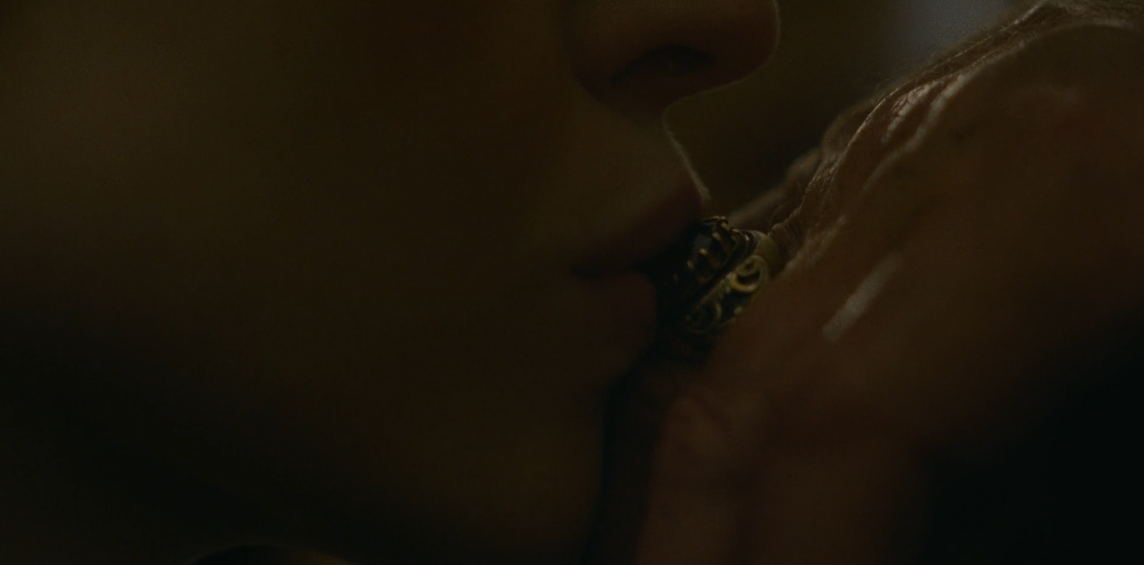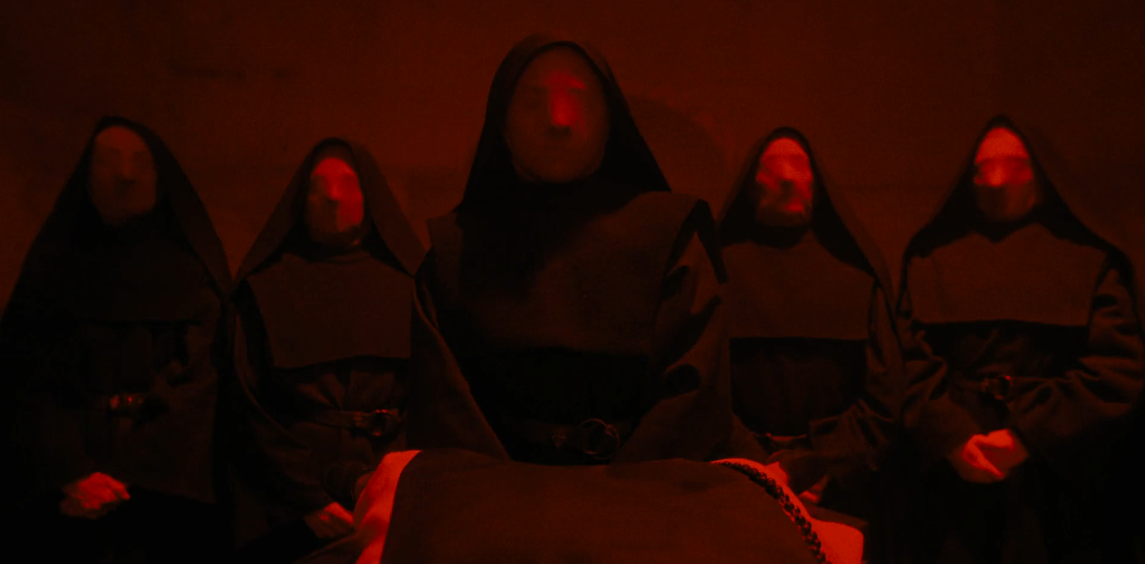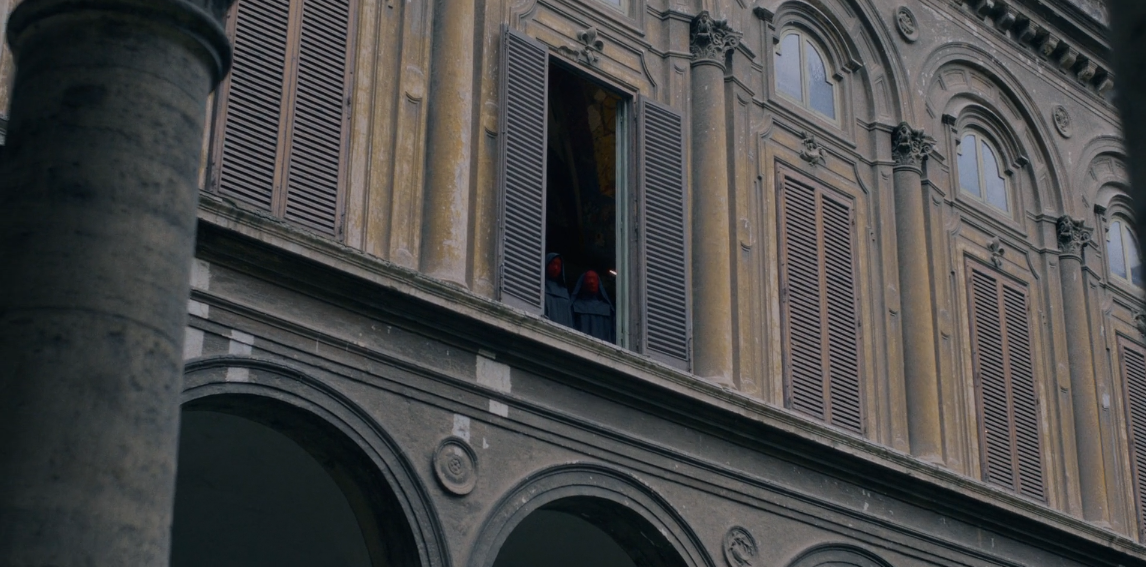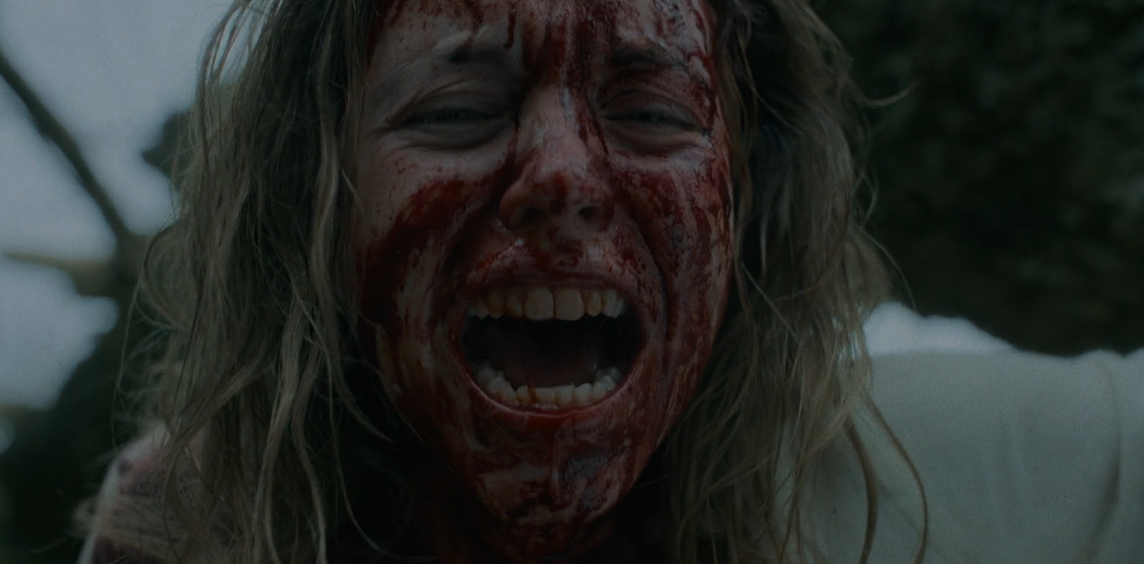 Immaculate (2024)
Immaculate (2024)
Directed by Michael Mohan
Screenplay by Andrew Lobel
Starring Sydney Sweeney, Álvaro Morte, Simona Tabasco, Benedetta Porcaroli, Giorgio Colangeli, Dora Romano, Giulia Heathfield Di Renzi, & Betty Pedrazzi.
Horror
★★★★ (out of ★★★★★)
DISCLAIMER:
The following essay contains BIG OLE SPOILERS!
Turn back, lest ye be spoiled
& be forced to confess thine sins.
 Michael Mohan’s Immaculate brings young noviciate Sister Cecilia (Sydney Sweeney) to a relatively remote Roman Catholic convent in Italy where the nuns take care of older, dying nuns in the last stages of their lives. Sister Cecilia takes her final vows to become a nun at the convent and feels like she’s lucky to have been graciously accepted into the fold. But things begin to take a turn for the worse, as she has strange visions of hooded figures attacking her in the night, then discovers she’s pregnant even though she’s never had sex. Everyone starts to believe that Sister Cecilia is the next Virgin Mary. The truth? Far darker.
Michael Mohan’s Immaculate brings young noviciate Sister Cecilia (Sydney Sweeney) to a relatively remote Roman Catholic convent in Italy where the nuns take care of older, dying nuns in the last stages of their lives. Sister Cecilia takes her final vows to become a nun at the convent and feels like she’s lucky to have been graciously accepted into the fold. But things begin to take a turn for the worse, as she has strange visions of hooded figures attacking her in the night, then discovers she’s pregnant even though she’s never had sex. Everyone starts to believe that Sister Cecilia is the next Virgin Mary. The truth? Far darker.
In the Roman Catholic Church, women are good enough to be a vessel for immaculate conception (see: rape by way of God), yet they’re still to this day in 2024 not perceived as good enough to be priests. Oh, sure, they can be nuns, so long as they’re fine being married to Christ. Women in Catholicism have no true power within the institution. Immaculate is a horrific, deadpan satire of how the Catholic Church treats women, a very literal depiction of nuns as Brides of Christ followed through to an unnerving biological end. Sweeney’s Sister Cecilia becomes a vessel for a hopeful Second Coming, and for the worst impulses festering within Catholicism since its inception, namely the patriarchal control and misogyny on which it and Christianity as a whole hinge near entirely.

“Suffering is love.”
 The first outright mention of nuns as Brides of Christ in Immaculate occurs when the noviciates are given their final vows at the convent and the cardinal, in Italian, paraphrases a biblical verse, though slightly changes it from a singular “bride” in the original Revelation 19: 7 passage to the plural: “Let us rejoice, for the marriage of the Lamb has come, and his brides have made themselves ready.” Not long afterwards, poor Sister Cecilia becomes an all-too-literal Bride of Christ by being impregnated via immaculate conception. The nun as Bride of Christ idea was famously propagated by Gertrude the Great, a 13th-century German Benedictine nun and mystic; she and her friend/teacher Mechthild of Hackeborn practised ‘nuptial mysticism.’ Beatrice of Nazareth, also in the 13th century, was associated with nuptial/bridal mysticism. She wrote a treatise titled Seven Ways of Holy Love in which she compared the soul’s relationship with God to being a bride and then a housewife. 700-odd years after Gertrude and Beatrice, Sister Cecilia suffers through a monstrous birth after being deemed a “perfect, fertile vessel” to forcibly bear the supposed child of God, like a self-fulfilling nun prophecy made possible by a sleazy priest’s abominable combination of religious zealotry and genetic modification.
The first outright mention of nuns as Brides of Christ in Immaculate occurs when the noviciates are given their final vows at the convent and the cardinal, in Italian, paraphrases a biblical verse, though slightly changes it from a singular “bride” in the original Revelation 19: 7 passage to the plural: “Let us rejoice, for the marriage of the Lamb has come, and his brides have made themselves ready.” Not long afterwards, poor Sister Cecilia becomes an all-too-literal Bride of Christ by being impregnated via immaculate conception. The nun as Bride of Christ idea was famously propagated by Gertrude the Great, a 13th-century German Benedictine nun and mystic; she and her friend/teacher Mechthild of Hackeborn practised ‘nuptial mysticism.’ Beatrice of Nazareth, also in the 13th century, was associated with nuptial/bridal mysticism. She wrote a treatise titled Seven Ways of Holy Love in which she compared the soul’s relationship with God to being a bride and then a housewife. 700-odd years after Gertrude and Beatrice, Sister Cecilia suffers through a monstrous birth after being deemed a “perfect, fertile vessel” to forcibly bear the supposed child of God, like a self-fulfilling nun prophecy made possible by a sleazy priest’s abominable combination of religious zealotry and genetic modification.
Gothic is a word that’s routinely misused—almost as much as ‘Lovecraftian’—because most people wrongly apply the architectural idea of Gothic to fiction (i.e. it must have old dark houses or ancient cathedrals, etc), but the fact is that Gothic concerns itself with looking back into the past and simultaneously remaining firmly in the present; it’s a way of comparing the past with the present, a typically disturbing perspective on how many things, often the worst, haven’t changed in spite of historical and social progress. Immaculate epitomises this Gothic introspection about history in how it confronts the enduring patriarchy and misogyny of the Roman Catholic Church.
One way Mohan’s film exhibits the Gothic is through a recurring image of hooded, shrouded figures lurking around the convent; they attack Cecilia in the vision she has prior to finding out she’s pregnant. It’s difficult for those familiar with Christian iconography to see the figures’ shrouded faces—a familiar, recycled horror film image, but also a great way for terrible Catholics in Immaculate‘s plot to conceal their identity—and not immediately connect them with the Shroud of Turin. Doesn’t it work so well symbolically? The shrouded faces resembling the Shroud of Turin is a deliciously Gothic image, as the figures go about trying to facilitate the Second Coming of Christ; the famed Shroud is said to be the burial shroud that Jesus Christ was wrapped in after the crucifixion, which became imprinted with what many Christians believe is the bodily image of Christ. Even better, the shrouded faces in Immaculate are red, as if recalling the death of Christ and likewise stained with the very blood of Jesus himself. All of the film’s Gothic elements are not only pure Gothic in the most literary sense, they’re dripping with Catholicism. While Mohan and Lobel didn’t intend Immaculate to be focused on any kind of social message according to the former, it doesn’t change the fact that the film is easily read as a metaphor about the Roman Catholic Church’s stance on abortion: nunsploitation that depicts a woman unwillingly impregnated and forced by Catholics to carry a child to term, resulting in a monstrous birth. Immaculate‘s Second Coming is a deeply Gothic one that locates its terror directly in the body of women, and this is where it diverges quite a bit from traditional nunsploitation films of the past, most of which focused on the nuns’ behaviour, depicting everything from lesbianism to elements of BDSM while the nuns went off the sexual and sometimes murderous(/demonic) deep end.
While Mohan and Lobel didn’t intend Immaculate to be focused on any kind of social message according to the former, it doesn’t change the fact that the film is easily read as a metaphor about the Roman Catholic Church’s stance on abortion: nunsploitation that depicts a woman unwillingly impregnated and forced by Catholics to carry a child to term, resulting in a monstrous birth. Immaculate‘s Second Coming is a deeply Gothic one that locates its terror directly in the body of women, and this is where it diverges quite a bit from traditional nunsploitation films of the past, most of which focused on the nuns’ behaviour, depicting everything from lesbianism to elements of BDSM while the nuns went off the sexual and sometimes murderous(/demonic) deep end.
Immaculate remains steadfast in its gruesome satire of the Roman Catholic Church’s misogynistic control over women and uses body horror as a metaphorical way to confront this religious, patriarchal violence. The fact the film came along post-reversal of Roe v. Wade lends itself to a reading centred on institutional control of women’s bodily autonomy, especially in context of the final scene in which Sister Cecilia must carry the monstrous Christ child to term before she kills it, like a vision of harsh realities facing young mothers driven to infanticide by postpartum depression or the fact they were raped into pregnancy and couldn’t access a legal abortion. Immaculate is one of the most effective nunsploitation films in the past several decades, alongside Paul Verhoeven’s Benedetta (2021), because it tackles some of Catholicism’s most horrific qualities and acknowledges that, in spite of how the current Pope tries to present himself as progressive in certain ways, very little has changed fundamentally about Catholicism in 2000 years, most of all when it comes to its views regarding women.


Pingback: Reviews: Immaculate (2024) – Online Film Critics Society